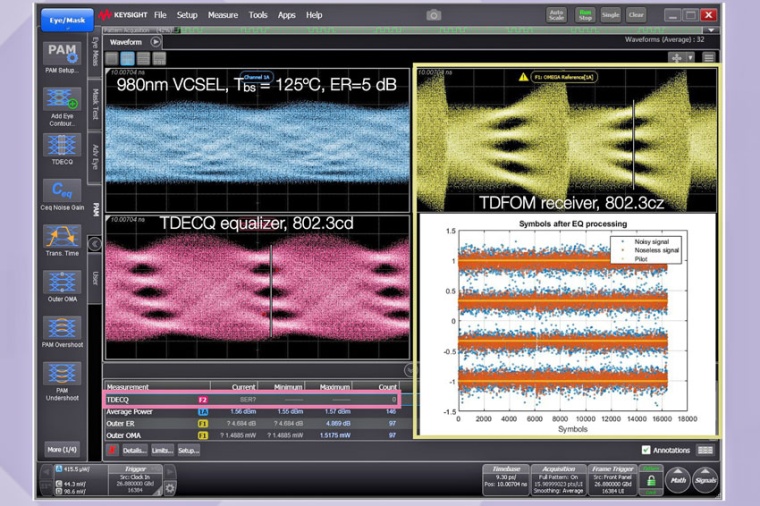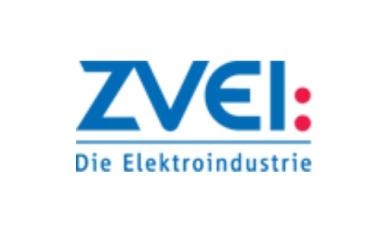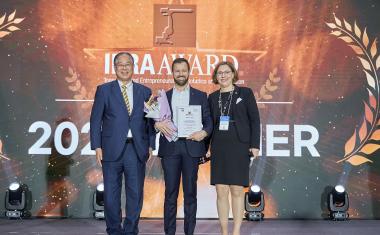Keysight partners with KD
Collaboration delivers TDFOM measurement and signal metric analysis for next-generation automotive networks, driving industry-wide standardization and interoperability.
Keysight Technologies and KD, a fabless semiconductor company, have collaborated to create a comprehensive test for Multigigabit Optical Automotive Ethernet physical layer. The companies have jointly developed a transmitter distortion figure of merit (TDFOM) measurement and signal analysis metric validating PMD transmitter conformance based on the IEEE 802.3cz and Open Alliance.

Vehicles today contain over 100 million lines of code, pushing the limits of their hardware capabilities to support an unprecedented combination of infotainment systems, advanced driver-assistance systems (ADAS), and computing power. Future vehicle computing systems are evolving to be more centralized, with more software-defined features and greater data sharing between fewer engine control units (ECUs). Thus, backbone communications links push to ever-higher speeds in the multigigabits-per-second range.
In response, the industry has created new automotive Ethernet standards, with IEEE 802.3cz being the highest data rate multigigabit standard. Published in 2023, this standard supports operations up to 50 Gb/s over glass optical fiber, specifying physical-layer requirements and management parameters for 2.5, 5, 10, 25, and 50-Gb/s operations in automotive environments. This standard is designed to meet the demands of modern in-vehicle networking platforms.
The newly developed TDFOM measurement and signal analysis metric represents a significant advancement in evaluating multigigabit optical signal quality in glass optical fiber transmission. As specified in IEEE 802.3cz, TDFOM measurements utilize a reference receiver that models typical integrated circuit implementation, ensuring transmitter interoperability through signal integrity validation. This metric is essential for calibrating reference transmitters and enabling accurate compliance testing of optical receivers.
Combining KD's software-based reference receiver and signal metric analysis capabilities with Keysight's optical-to-electrical converter (O/E) and oscilloscope technology delivers a comprehensive testing platform that evaluates a transmitted optical signal's ability to achieve the required system bit error rate after passing through a worst-case optical channel and a reference receiver. This collaborative development emerged from both companies' active participation in establishing the final TDFOM specification during the IEEE 802.3cz standard development.
Further reading: Fiber optics connectivity based on long-wavelength VCSELs, wileyindustrynews.com, 09 January 2024
Reference: R. Pérez-Aranda (KD) & J. Pankert (Trumpf Photonic Components): Optical neurons to interconnect sensors and artificial brains in autonomous vehicles – Fiber optics connectivity based on long-wavelength VCSELs and fully-integrated and adaptive electronics, PhotonicsViews 21(1), February/March 2024, first published online: 01 December 2023; DOI: 10.1002/phvs.202300047 (online open)











